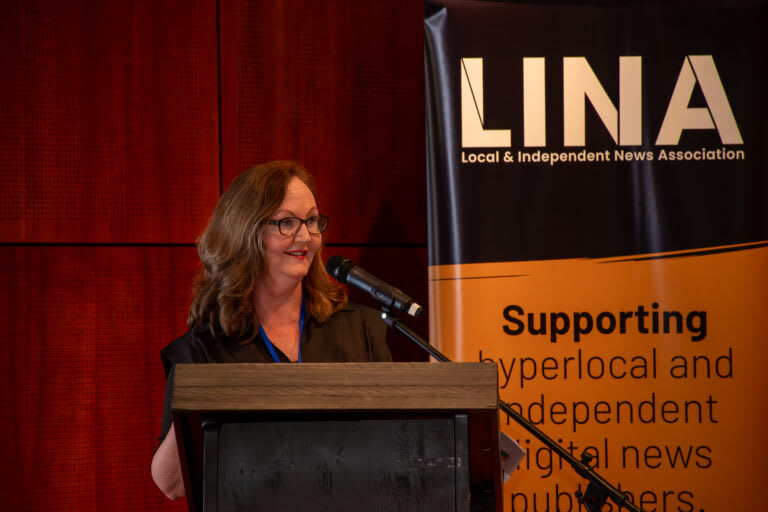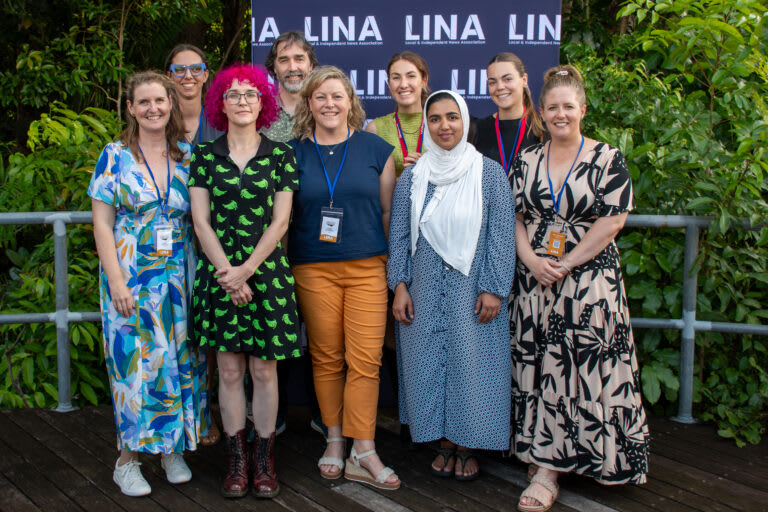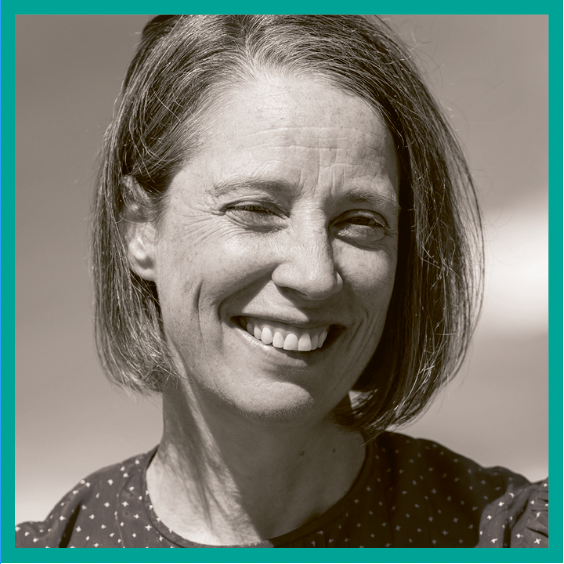Behind the headlines: Women are leading local, independent media
We call it Cocktail Hour, but in truth most of us are exhausted after the week and sipping tea. It takes a lot of work, long hours and the shape-shifting skills of a chameleon to run an independent media business. Stella, the owner/editor of Melbourne’s Manningham Life, describes herself as a “one-

We call it Cocktail Hour, but in truth most of us are exhausted after the week and sipping tea. It takes a lot of work, long hours and the shape-shifting skills of a chameleon to run an independent media business.
Stella, the owner/editor of Melbourne’s Manningham Life, describes herself as a “one-woman show”. I call it “wearing many hats” and have been switching from one to another since 2013, when we first planted the seed for The Illawarra Flame. Even The Pineapple founder Vivienne Wynter, whose cheerful energy transmits over Zoom from Gympie, admits being a solopreneur is “very demanding”.
The three of us represent a changing of the guard.
In Australia, the land that launched the Murdoch empire, all the big media companies are still owned by men. But in small indie media, it’s a different story. Increasingly, publications owned and run by women are gathering under the banner of the Local and Independent News Association (LINA), an industry body founded in 2021.
It’s how Stella, Vivienne and I met.
“We have 91 different publishers in the group and they publish 161 different news services in different parts of the country,” says LINA's executive director, Claire Stuchbery.
“Of that group, 56% of those newsrooms are led by women, which is unusual in the broader news industry.”
There are big gaps to fill – according to the Public Interest Journalism Initiative, 183 Australian news outlets have shut in the past five years and 27 local government areas have no local news.
Claire sees independent news as a vital public service, with a healthy media supporting a healthy democracy. Communities want local news produced by local journalists they know and trust, she says.
“A lot of the leaders of newsrooms in the LINA group are very much responding to that need. I don't necessarily think that that is gender-based, but the reality is that most of our members are led by women.”

Positively successful
Geographically, Stella, Vivienne and I are thousands of kilometres apart. Stella and I are new Australians – she grew up in Malaysia, I’m South African – and we run print-focused companies. Vivienne’s enterprise is a digital-only not-for-profit. But we have something notable in common.
We like our news on the bright side – be it celebrations of community champions or solutions-style journalism.
“We do lots of stories about local residents that have amazing lives and experiences,” says Stella, who has been closely connected to her community through groups such as Rotary for the past 15 years.
“It’s purposeful that I focus on the positive stories," she says.
“Online, there's a lot of negativity. I find that I'm providing this little space where people can just say, ‘Oh, I didn't know this neighbour, who has been in this competition or has won this many things’. They're inspiring stories, about people who do things that make a difference.
“I just feel good about sharing these stories.
“My master's is in public policy, so I've always been interested in the big picture and making a difference. I guess I'm an unusual editor/publisher in that way, because my perspective is: ‘What is good for the community?’”
Vivienne has a similar take. “Healthy communities are based on citizens informed by facts not misinformation,” she says.
“Having freelanced for News Ltd and Fairfax throughout my career, I’m also motivated by the opportunity to work for my vision of constructive, positive journalism, rather than having to fit into the agenda of the big media organisations who still focus on conflict and bad news.”
Both these approaches mirror the Illawarra Flame’s. And all three of us have loyal, engaged and growing readerships. Could we be the answer to old media’s modern malaise?
'News Avoidance' on the rise
LINA recognises news avoidance as a growing problem, particularly among women.
“We're seeing women turn off from mainstream news services and largely that's because they're not meeting their needs and interests,” Claire says.
“A lot of people, and particularly women, are finding news to be increasingly depressing, and a lot of information that they don't necessarily feel relates to their lives.”
Both men and women want something the mainstream isn’t delivering, Claire says.
“So they're starting it themselves.”
While it's easy to assume young people are both the technology adopters and news avoiders, Claire says they’re just sourcing their news differently – from social media, YouTube in particular. "We're certainly seeing news avoidance rising on a gender lens, but less so on an age lens.”

Start-ups fill the gap
After six months in development, Vivienne launched The Pineapple website on 1 March 2023.
“I wanted to start an independent news platform all my life,” she says, “and in 2022 I sold an investment property and then invested the capital gain into making my lifelong dream come true.”
Stella began Manningham Life in May 2021, with no experience in journalism. She simply saw a need after News Ltd closed down her local Leader (and many others) during the first Covid lockdown.
“That was in March 2020,” Stella says. “It was the only newspaper we had. It was not great, to be honest. But still it was delivered free, it came into our mailbox, and it was the thing that connected us.”
Running a web development company with her husband gave Stella the confidence to use her communication skills to create a bi-monthly A4 magazine.
“We need it in printed form,” she says. “Most of the older people, they're not online. But I had to do it in such a way that it's meaningful. So I'm like, 'Okay, I'll just try 20,000 and see how it goes'.”
The first three years were hard. “I had to loan money to the company to pay for everything. And then last year, we finally broke even in every issue.”
All three of us confess to being overworked multitaskers.
Stella – who recently took on another challenge: running as an independent candidate for Menzies in the 2025 federal election – says that in publishing community news her biggest sacrifice has been not paying herself. “I'm very grateful to our volunteers, the ones that contribute articles and the ones that help to letterbox. That is amazing. But everything else that happens, it's just me. And the one-woman machine can only do so much.”
“Filling the roles of publisher, editor, journalist, admin officer, accountant and publicist is very demanding," Vivienne says, "but I also relish the challenge of learning all the roles needed to support a news platform. So I would say I’m tired and stretched, but happy and fulfilled.
“I’ve invested the last two years of my life (unwaged) and my life savings to produce an independent news platform and they are big sacrifices. I consider the sacrifices worth it because of the recognition we’ve received from community leaders who value local and independent journalism and because producing an independent news platform has been the best experience of my life.”

Stella feels valued and that’s what keeps her going.
“I get a lot of great comments. Of course, the comments don't pay for anything, but I know that if I were to stop, then we will become another news desert.
“Occasionally, we get to do articles that make a difference.
“The first one I did was an explainer. So the City of Manningham, very interestingly, has the largest number of people from Iran in the whole of Victoria and the whole of Australia.”
Stella decided to run an article by a local Iranian about Nowruz, the Persian new year on the equinox of March 21.
“We had a really nice cover. People said, ‘I never knew anything about this. I'm so glad I read the article because now when I walk past their shops, I know what this's all about.' So I felt like I've been in a position to educate a whole community about their neighbours.
“We did that for the Chinese community as well. We got the interns to write about things that are important to the Australian culture – like Anzac Day, the significance of it – and we translated that to Mandarin.”
“I'm very pleased with those stories, when we educate and connect people.”

The LINA lifeline
In addition to training, networking, advocacy and advice – on law, technology, marketing and more – LINA offers small grant funding. Stella, Vivienne and I have all benefited. In 2024, Manningham Life published helpful analysis ahead of Victorian council elections. My proudest moment was Communications Minister Michelle Rowland praising The Flame in her opening address at LINA’s 2024 conference. More recently, Vivienne has produced first-class reportage on Queensland’s energy transition.
“We’ve been following some big stories, including the $14-billion-dollar Borumba Pumped Hydro plant,” she says, “and our journalism on this massive project has attracted comments like ‘Finally some serious journalism’ from people I consider heavyweights in this space.
“That’s big picture and smaller picture – a very cool local theatre director told me last year she reads my reviews aloud to the cast and crew of her youth theatre productions on opening nights. Hardly any media review theatre or the arts these days and The Pineapple is very often the only media platform to review local theatre, music, books, art and fashion.
“As a former arts journo for ABC Radio National, I know how important critical reviews are to the arts community.”

Journalism for good
These are strange times to be a journalist. On one hand, the industry is dying, on the other, it’s never been needed more.
Globally, legacy media has been outfoxed by tech billionaires who have taken all of the advertising dollars and none of the responsibility. Lies masquerading as free speech are rife.
LINA is lobbying hard for politicians to recognise the value of independent media.
“Public interest journalism should be acknowledged as a public good and that it should be recognised in the Charities Act, for example,” Claire says.
“It should be recognised as something that contributes to the fabric of our communities, in lots of different ways because public interest journalism not only strengthens democracy and civic engagement, but it also contributes to social cohesion. It contributes to safety in terms of emergency preparedness and community resilience, particularly in times of crisis.”
With four companies controlling 84% of the newspaper sector, Australia ranks second-worst in the world for media concentration, something that can lead to the polarisation of communities, Claire says.
“We're seeing the rise of mis- and disinformation, which often has a polarising effect as well … Local news and independent media, in particular, has a really strong role in being able to combat some of that misinformation and to bring us back to the facts.”

The year ahead
Thanks to LINA’s support, Stella and Vivienne are optimistic about 2025. Like The Illawarra Flame – which has grown from a small print magazine to a regional voice on multiple platforms – their titles are expanding.
“The Pineapple has grown rapidly to attract 25,000 readers in a year and a half and a strong profile in the Gympie community where strangers often say to me ‘You are from The Pineapple! I read The Pineapple’ and they are positive and buzzed about our platform,” Vivienne says.
“The signs are positive for the growth of small independent news organisations and I’m excited to be part of this movement full of good people. It’s how the media first started in Australia, after all."
Vivienne has her sights set on philanthropic funding: “I’m looking forward to the next phase of revenue raising which will focus on big dollar donors now we have stacked The Pineapple with public interest journalism and arts content we can be proud of and use to leverage philanthropic support.
“I’m also hopeful the Federal Government will make media organisations eligible for tax-deductible donations, which will be a game-changer.”
In the meantime, Stella and I believe federal, state and local governments should simply allocate more of their advertising spend to independent media.
“At least 50% must go to non-major players,” Stella says.
Question of sustainability
For media everywhere, the 2020s are a time of rising costs and falling advertising, with the added existential threat of AI.
“The way things are right now is incredibly challenging for individuals across the industry,” Claire says. “People are working a lot of unpaid hours to deliver services because they're community-minded people that are very passionate about the areas that they serve.
“With the sustainability of newsrooms, both from the perspective of their income, but also from the perspective of how long individuals can reasonably be expected to work seven days a week without a break, and those sorts of things that are happening across the industry, absolutely there is a high risk of burnout.”
And that's why the peer support of a regular Cocktail Hour – even if teetotal and via Zoom – is so valuable. Cheers to Viv, Stella and Claire for their help with this article, and much more.





